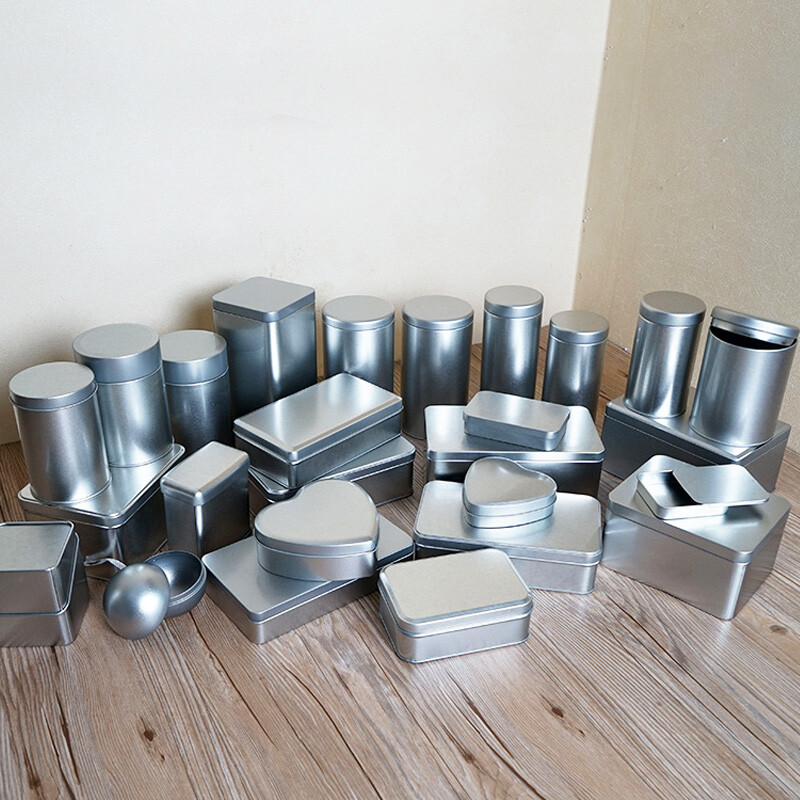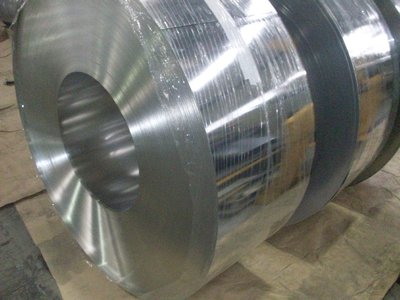
Tinplate is a steel coated with a thin layer of tin, giving it a distinctive appearance and unique properties. This coating not only enhances the aesthetics of the material, but also provides additional protection against corrosion and rust.
The process of making tinplate involves several steps. First, a thin layer of tin is coated on both sides through an electroplating process or by immersing a thin steel sheet in molten tin. This results in a smooth, even coating that adheres firmly to the steel surface.
One of the main advantages of using tinplate is its excellent corrosion resistance. The tin layer acts as a barrier between the steel and external elements, preventing moisture and other corrosive substances from reaching the metal below. This makes it ideal for packaging food and beverages, where maintaining product freshness is critical.
In addition to its protective properties, tinplate also has good formability and weldability. It can be easily formed into various shapes without cracking or cracking, enabling manufacturers to create intricate designs for cans, containers, caps and more.
In addition, tinplate has excellent thermal conductivity, making it suitable for applications such as cookware and heating elements. Its high melting point ensures it can withstand high temperatures without warping or deforming.
Tinplate is a versatile material that can be used in numerous industries, including packaging (cans), electronics (shielding materials), automotive parts (fuel tanks), construction (roofing), and more.
So the next time you open your favorite canned beverage or marvel at an intricately designed container, remember that behind this shiny exterior lies the strength and durability that tinplate offers, unassuming but remarkable!
How is tinplate made?
Tinplate, also known as tin-plated steel, is a packaging material that has been widely used for over a century. But have you ever wondered how this versatile material is made? Let’s take a closer look at the manufacturing process of tinplate.
The first step in producing tinplate is to hot-dip a strip of mild steel into molten tin. This process is called tinning and it creates a layer of tin on both sides of the strip. The thickness of the tin coating can vary depending on the intended use of the finished product.
After tinning, the coated strip is passed through drums to remove excess tin and achieve a uniform thickness. They are then annealed to improve their formability and strength. Annealing involves heating a metal to a high temperature and then cooling it slowly.
Once properly annealed, tinplate undergoes various finishing processes such as trimming, oiling and passivation. Trimming ensures that all edges are smooth and free of defects, while oiling prevents corrosion during storage or transport. Passivation further enhances corrosion resistance by applying a protective coating.
Quality control measures such as visual inspections and rigorous testing ensure that only the highest quality products leave the production line.
Manufacturing tinplate requires tinning steel strips with molten tin, followed by finishing processes such as rolling, annealing, trimming and oiling, followed by strict quality inspections. This meticulous manufacturing process ensures that each piece of tinplate meets industry standards for durability and reliability.
The use of tinplate
With its unique performance and versatility, tinplate is widely used in various industries. Let’s explore some of the common uses for tinplate.
In the food industry, tinplate is usually used to make cans for packaging food, such as canned fruits, canned vegetables, canned soup and canned meat. The thin layer of tin on the surface provides an excellent barrier against moisture and oxygen, ensuring the freshness and quality of the packaged goods.
Tinplate is also used in the beverage industry, where it is used to make cans for carbonated beverages such as soda water and beer. Its corrosion-resistant properties help maintain the integrity of these beverages while providing visually appealing packaging.
In addition, tinplate is widely used in the cosmetics industry for the manufacture of containers for products such as face creams, lotions, lip balms and perfumes. The smooth surface finish achieved by electroplating gives these containers an elegant appearance that appeals to consumers.
Furthermore, due to its formability and durability characteristics, tinplate is widely used in industrial packaging solutions such as aerosol cans, paint cans, and chemical drums. These containers require strong materials that can withstand harsh environments while efficiently preserving their contents.
Additionally, tinplate is often used in construction applications such as roofing materials, siding, drywall corner beads, and more. Their high corrosion resistance makes them ideal for long-term protection of structures from the elements.
Overall, the versatility of tinplate allows it to be used in several fields such as food and beverages, cosmetics and industrial packaging.
Advantages and disadvantages of tinplate
Tinplate, like any other material, has its own advantages and disadvantages. Let’s take a closer look at the advantages and disadvantages of tinplate.
One of the great advantages of tinplate is its excellent corrosion resistance. A thin tin coating on the surface acts as a protective barrier against rust and oxidation. This makes it ideal for packaging food and beverages, ensuring their freshness and extending their shelf life.
Another advantage of tinplate is its high strength-to-weight ratio. It has excellent structural integrity while being lightweight, making it easy to transport and handle. Additionally, it can withstand extreme temperatures without compromising its performance.
Tinplate also boasts excellent printability, making it an attractive option for branding. Its smooth surface allows for precise printing of vibrant colors and intricate designs.
However, there are some disadvantages to consider when using tinplate. One downside is that it can be more expensive compared to alternatives like aluminum or plastic. This cost factor may limit its use in certain industries with tight budgets.
Also, while tin does provide some level of corrosion protection, over time the coating can wear away or become damaged if subjected to rough handling or harsh environments. Regular inspection and maintenance are necessary to ensure long-term durability.
Conclusion
Tinplate is a versatile material that has been used in various industries for decades. Its unique combination of strength, durability and corrosion resistance makes it ideal for packaging solutions, especially for food and beverage products.
In this article, we explore what tinplate is and how it is manufactured. We also discuss some of the common uses of tinplate, including its use in cans and packaging.
While there are several advantages to using tinplate, such as recyclability and the ability to maintain product quality, there are also some disadvantages to consider. Tinplate adds extra weight to the product and may require additional handling steps in the recycling process.
In terms of performance characteristics, tinplate has excellent moisture-proof, oxygen-proof, light-proof and anti-odor properties. It also provides good printability options for branding purposes.
There are different grades of tinplate on the market, depending on specific requirements such as thickness or coat weight. Popular steel grades include Single Reduced Steel (SR), Double Reduced Steel (DR), Electrolytic Chrome Coated Steel (ECCS), etc.

Contact us
So-Lucky Steel Limited is a professional steel supplier. As the designated dealer of Baosteel, the designated agreement user of Maanshan Iron and Steel, Shougang, and VAMA, the company pays more attention to product quality. The company strictly uses high-quality raw materials, meticulous workmanship, and mature technology. We attach great importance to Product quality issues are strictly checked by professionals in every process of product production and processing. It is my great honor to recommend our company’s tinplate products to you, because I believe it will bring you unparalleled experience and value. Our tinplate is made from the highest quality materials, carefully designed and precisely machined. It has excellent wear resistance and durability, able to maintain its beauty and function for a long time. Whether in a home or commercial kitchen, our tinplate is built to withstand heat, stress and frequent use, providing you with reliable cooking tools. If you have a demand group, you can contact us and look forward to cooperating with you!

